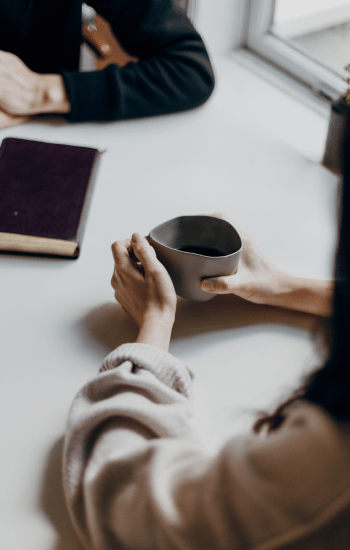Takeaway: A key step in managing anxiety involves discovering which therapeutic strategies work best for you! In this comprehensive guide, we’ll explore a curated selection of anxiety-relieving practices tailored for both individual and group settings. Let’s embark on this journey toward a calmer, more centered you.
Feeling nervous from time to time is a normal part of life our lives. But if we live with prolonged stress, anxiety can develop. Many people are searching for effective ways to manage anxiety, whether it’s the nervous flutter in their stomach before a big event or the overwhelming fear that something bad is going to happen. This guide aims to provide practical coping skills to manage anxiety symptoms and feel more relaxed in everyday life.
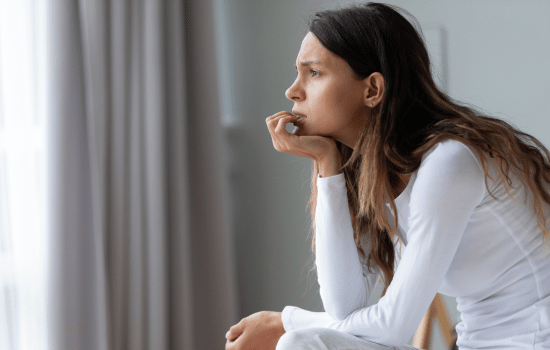
What is anxiety?
Anxiety is a natural and common response to stress. It’s the feeling of fear or apprehension about what’s to come – for example, the first day at a new job, giving a speech, or moving to a new place. However, anxiety disorders are different. Distinguishing between a common stress response and anxiety is essential for understanding and managing one’s mental health effectively. Here are some key factors to consider:
Duration and Intensity
Common Response: Stress is typically a reaction to external triggers and tends to be temporary. Once the stressor is removed, feeling stressed usually diminishes. For example, you might feel impending doom about a work deadline, but once it’s met, the feeling subsides.
Anxious Response: Anxiety, especially in disorders, often persists even in the absence of an immediate stressor. It is more enduring and can arise even without a clear cause. The intensity of anxiety is usually disproportionate to the situation and can be more overwhelming than your typical response.
Physical Symptoms
Common Response: Stressful times can cause physical symptoms like headaches, muscle tension, or temporary increases in heart rate and blood pressure.
Anxious Response: Anxiety can lead to similar symptoms, but they are often more intense and can include excessive sweating, trembling, rapid heartbeat, stomach aches, and even panic attacks.
Impact on Daily Life
Common Response: While stress can be disruptive, it usually doesn’t significantly interfere with daily responsibilities and activities. People can often continue their routines while managing their distress.
Anxious Response: Anxiety disorders deeply impact your life. It may cause avoidance of certain situations, impact social interactions, work, or school performance, and hamper normal functioning.
Cognitive and Emotional Effects
Common Response: Stress might lead to temporary worry or frustration, but these feelings are usually directly linked to a specific issue or event.
Anxious Response: Anxiety includes persistent, excessive worry which is hard to control and may create feelings of dread, anticipatory fear, restlessness, and being on edge, even in the absence of a specific problem.
While everyone experiences stress and anxiety at some point, it’s the duration, intensity, impact on daily life, and the nature of symptoms that differentiate a common response from an anxiety disorder. If your anxious feelings are persistent, overwhelming, or interfere with daily activities, it’s advisable to seek guidance from a licensed mental health therapist for appropriate diagnosis and treatment.

Types of anxiety disorders
Anxiety disorders are a prevalent category of mental health disorders with distinct characteristics and symptoms.
Generalized Anxiety Disorder (GAD)
Generalized Anxiety Disorder is characterized by excessive worry about various aspects of life, like work, health, or finances. People with GAD often find it difficult to control their worry, which is more intense than the normal anxiety people experience day to day. It’s often accompanied by symptoms like restlessness, poor concentration, fatigue, and muscle tension.
Panic Disorder
Panic disorder is marked by recurrent, unexpected panic attacks – sudden surges of overwhelming fear and symptoms such as chest pain, heart palpitations, dizziness, and shortness of breath. These episodes can lead to significant worry about future attacks and avoidance of places where attacks have occurred.
Social Anxiety Disorder (Social Phobia)
Social Anxiety Disorder involves an intense fear of social situations due to worries about being judged, embarrassed, or humiliated. This often results in significant distress and avoidance of social interactions, which can impact one’s work, school, and other day-to-day activities.
Specific Phobias
A specific phobia is an excessive and irrational fear of a specific object, situation, or activity. Common phobias include fear of heights, flying, spiders, or injections. These fears can lead to avoidance behaviors and significant emotional distress.
Agoraphobia
Agoraphobia is the fear of being in situations where escape might be difficult or help might not be available in the event of having panic-like symptoms or other embarrassing symptoms. This can include fear of open spaces, public transportation, shopping centers, or simply being outside the home.
Each of these anxiety disorders requires a specific treatment. Engaging in therapy activities for anxiety, skills training, and sometimes medication can greatly help. It’s crucial to seek help from a qualified counselor for a proper diagnosis and treatment plan. For more information on these disorders, resources from organizations like the American Psychiatric Association or the National Institute of Mental Health can be immensely helpful.
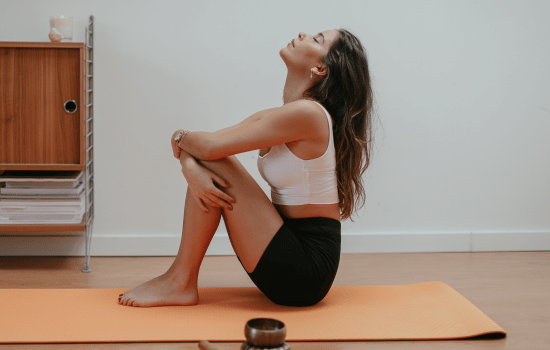
The Importance of Healthy Coping Mechanisms for Anxiety
Coping with anxiety refers to the stress reduction techniques an individual uses to manage heightened emotions and alleviate the symptoms of worry and concern. These techniques enable individuals to function better in their daily lives, despite the challenges posed by stress or anxiety disorders. Here’s a deeper look into activities that help with anxiety:
1. Mindfulness and Relaxation Techniques: Practices like meditation, deep breathing, and progressive muscle relaxation help calm the mind and body, reducing the physiological symptoms.
2. Physical Activity: Exercise such as jogging, cycling, or lifting weights releases endorphins, natural stress, and pain relievers, which improve mood and decrease feelings of stress.
3. Cognitive Behavioral Techniques: These involve identifying and challenging negative thinking and beliefs that contribute to anxiety, and replacing them with more realistic, positive, or effective thought processes.
4. Lifestyle Adjustments: Ensuring adequate sleep, a balanced diet, and reducing caffeine and alcohol intake can significantly impact one’s level of calming effects.
5. Social Support: Sharing concerns with friends, family, or support groups can provide stress reduction and decrease feelings of isolation.
The Benefits of Managing Stress
1. Reduces Symptoms: Effective coping can significantly lessen the intensity of worry, making daily tasks and challenges more manageable.
2. Improves Quality of Life: By dealing with anxious feelings, individuals can enjoy a better overall quality of life, engage fully in relationships, work, and hobbies, as well as experience greater emotional and mental well-being.
3. Prevents Negative Outcomes: Unaddressed anxiety can lead to several negative outcomes, such as depression, substance abuse, and physical health problems. Good coping strategies can prevent these outcomes.
4. Empowers the Individual: Learning and practicing coping strategies may build confidence in individuals by utilizing their strengths and abilities to overcome difficulties in life.
5. Promotes Long-Term Resilience: Developing effective coping mechanisms contribute to long-term resilience against future stressors. It prepares individuals to handle future challenges with greater ease and less distress.
Therapy activities for anxiety are important in becoming less anxious. It’s also important to remember that what works for one person might not work for another. It’s often a process of trial and error to find the right combination of techniques. In cases of severe or persistent anxiety, consult a licensed professional counselor who can provide a tailored treatment plan, which may include therapy, medication, or a combination of both.
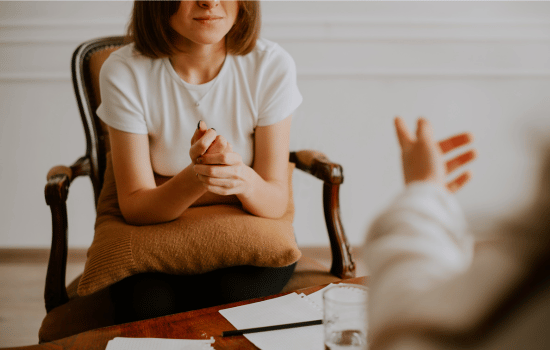
Types of anxiety therapy
Understanding the different types of therapy available is important for those seeking relief from anxiety. Below, we explore several key therapeutic modalities used:
Cognitive Behavioral Therapy (CBT):
Cognitive Behavioral Therapy is one of the most widely used and effective treatments for anxiety disorders. CBT is based on the concept that negative thought patterns and beliefs significantly influence emotional and behavioral responses. CBT helps individuals identify, challenge, and change these unhelpful thoughts, thereby altering the way they perceive and react to fear-provoking situations.
Exposure Therapy
Exposure Therapy is a subset of CBT and is particularly effective for specific phobias and post-traumatic stress disorder (PTSD). It involves the gradual and controlled exposure to the feared object, situation, or memory in a safe environment. The aim is to desensitize the individual to the anxiety trigger, reducing the power it holds over them. Over time, exposure therapy helps individuals confront and overcome their fears, thereby reducing the overall distress level.
Acceptance and Commitment Therapy (ACT)
Acceptance and Commitment Therapy is a newer form of psychotherapy that encourages individuals to accept and be mindful of their anxiety rather than fighting or feeling ashamed of it. ACT focuses on helping individuals live a value-driven life despite their concerns. It incorporates mindfulness strategies and is centered on the concept that suffering is a normal and unavoidable part of the human experience and that trying to control or eliminate negative feelings only amplifies them.
Psychodynamic Therapy
Psychodynamic Therapy explores the influence of experience and unconscious mind on current behavior. It’s particularly beneficial for those whose fear might be rooted in unresolved conflicts or experiences from the past. Through this therapy, individuals can uncover the underlying source of their anxieties, leading to insights and resolution of these deep-seated issues.
Interpersonal Therapy (IPT)
Interpersonal Therapy focuses on the relationships of the individual and how they affect and are affected by the person’s psychological state. It’s particularly helpful for people whose avoidance is triggered or exacerbated by interpersonal conflicts or stressors. IPT helps individuals understand and improve their interpersonal styles and relationships.
Group Therapy
Group Therapy for anxiety involves one or more therapists working with several people at the same time. This modality can be particularly effective as it provides a support network and a sense of belonging. It allows individuals to share experiences and learn from others who are facing similar challenges.
Therapy activities for anxiety offer unique approaches and benefits, and the choice of therapy often depends on the individual’s specific needs, preferences, and the nature of their behavior.
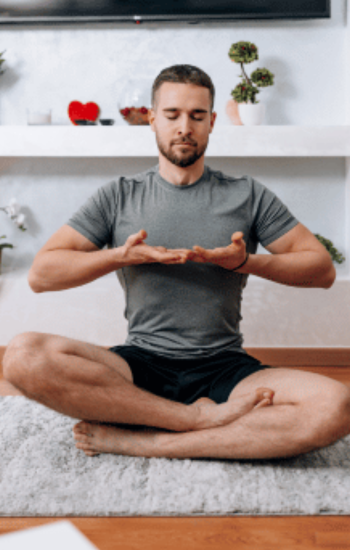
Therapeutic activities for anxiety to relieve stress
To reduce stress levels, therapy activities for anxiety play a crucial role. These activities are not just distractions; they are structured methods designed to alleviate the mental and physical symptoms of anxiety. Engaging in such activities can lead to a reduction in perceived stress, improved mood, and better overall mental health.
From breathing exercises to art therapy, these activities target various aspects of feeling anxious, including negative core beliefs, difficult emotions, and unhelpful thought patterns. Let’s explore some of the key therapeutic activities that can be particularly effective in individual therapy.
Deep Breathing Exercises
Breath awareness is a simple yet powerful technique for managing stress. Breathing helps calm the nervous system, reducing immediate negative feelings. By focusing on slow, deep breaths, individuals can shift their attention away from anxious thoughts to the present moment, leading to a calming effect. This practice is beneficial in lowering stress levels, reducing body temperature, relaxing the mind, and increasing calmness.
Cognitive Restructuring
Cognitive restructuring is a core component of cognitive behavioral therapy. It involves identifying and challenging negative thought patterns and beliefs that contribute to anxiety. Through this activity, individuals learn to replace these unhelpful thoughts with more realistic and positive ones, thereby managing perceived stress more effectively. This technique is especially helpful in addressing negative core beliefs and depressive symptoms.
Art Therapy
Art therapy allows individuals to express themselves creatively, which can be therapeutic for those who find it difficult to articulate their feelings verbally. Creating art can help in processing anxious energy, improving mood, and providing a sense of accomplishment. It engages all the senses and can be a mindful practice that brings one’s focus to the present moment. This activity is beneficial for young adults and others who might feel overwhelmed by traditional talk therapy.
Physical Activity
Engaging in regular exercise is an effective treatment for anxiety. Exercise releases endorphins, which are natural mood lifters. Physical work also helps in reducing muscle tension, a common physical symptom of stress and worry. An anxiety activity like walking, running, or yoga can be particularly helpful in managing stress and improving overall mental health.
Mindfulness
Mindfulness is a practice that combines focused attention in the present. It encourages individuals to spend time observing their breathing and focus in a non-judgmental way, which can be especially helpful for calming down. This practice promotes relaxation, calmness, and concentration, and cultivates healthy ways of being.
Therapy activities for anxiety offer unique benefits and can be tailored to the individual’s specific needs and preferences. Incorporating activities that help with worry and fear can significantly enhance your ability to handle anxiety, break free from its grip, and lead a more fulfilling life. It’s important to work with a therapist to identify which activities are most suitable and to receive guidance on how to practice them effectively.
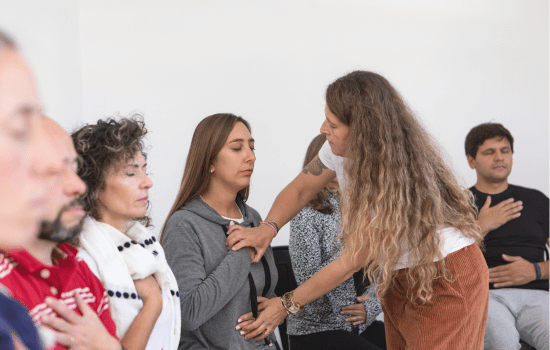
Anxiety group therapy activities
Group therapy for anxiety offers a unique and supportive environment. In a group setting, participants can benefit from the collective wisdom and encouragement of others facing similar challenges. This collaborative approach not only fosters a sense of community but also introduces diverse perspectives and coping mechanisms. Here, we explore various activities that are commonly employed in anxiety group therapy settings.
Group Discussions
One of the foundational activities in group therapy is structured group discussions. These discussions provide a platform for members to share their experiences, thoughts, and feelings about anxiety. The therapist facilitates these discussions, guiding the conversation to ensure that it remains productive and supportive. Group members can offer each other feedback, share coping strategies, and provide mutual support. These discussions help relieve stress, reduce feelings of isolation, and promote a sense of belonging.
Role-Playing Exercises
Role-playing is an effective activity used in group therapy to help members practice new skills in a safe and supportive environment. For instance, members may role-play social interactions that typically trigger anxiety, helping individuals learn and practice assertiveness or relaxation skills, in a controlled setting. It also provides an opportunity for feedback from both peers and therapists, allowing for a deeper understanding of their behaviors and thought patterns.
Mindfulness and Relaxation Techniques
Groups often participate in mindfulness and relaxation exercises together. Activities such as guided meditations, progressive muscle relaxation, or mindful breathing are common. These techniques help reduce the physiological symptoms of anxiety and teach members how to calm their minds and bodies. Practicing these skills in a group can enhance motivation and provide a shared experience of relaxation and focus.
Stress Management Workshops
Stress management is a vital component of a healthy lifestyle and group therapy often includes offers for workshops or sessions dedicated to this. These workshops might cover topics like time management, problem-solving, or lifestyle changes that can help reduce overall stress levels. Learning and practicing stress management techniques in a group setting can be empowering, providing members with practical tools and the support to implement them in their daily lives.
Cognitive Behavioral Exercises
Cognitive Behavioral Therapy (CBT) exercises in a group setting focus on identifying and challenging negative thought patterns that contribute to anxiety. Group activities might include identifying common cognitive distortions, practicing reframing negative thoughts, or group discussions on how thoughts influence emotions and behaviors. Doing these exercises in a group allows for diverse perspectives and insights, making the process more enriching and comprehensive.
Expressive Arts Activities
Expressive arts activities, such as drawing, painting, or music, offer a non-verbal way of processing emotions and experiences related to anxiety. These activities encourage creativity and self-expression, which can be therapeutic and offer a sense of relief and accomplishment. Group members can share their creations and the meanings behind them, fostering a deeper understanding and connection within the group.
Psychoeducation Sessions
Groups often include educational components, where therapists provide information about anxiety, its causes, symptoms, and treatments. Understanding the nature of anxiety and its effects on the body and mind can be empowering for group members.
Group therapy activities are designed to be interactive, supportive, and informative. They provide a platform for learning, growth, and healing, where members can work together toward managing their anxiety in a constructive and collaborative environment.
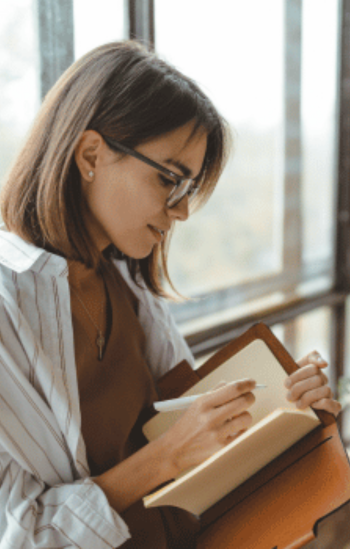
7 anxiety activities for adults to try at home
Practicing anxiety skills in the comfort of one’s home can be both empowering and therapeutic. While professional help is irreplaceable, especially for severe cases, there are several activities that adults can engage in at home to alleviate anxiety. It’s important to remember, however, that these activities are complementary to professional therapy and not a replacement for it.
1. Deep Breathing Exercises
Slow breathing is a simple yet powerful tool for any stressful situation. It involves slow, deep, and controlled breaths that help calm the nervous system and reduce the symptoms of anxiety. Techniques like the 4-7-8 method, where you inhale for 4 seconds, hold the breath for 7 seconds, and exhale for 8 seconds, can be particularly effective. Regular practice of breathing intentionally can bring about a sense of calm and relaxation.
2. Mindfulness Meditation
Mindfulness meditation encourages focusing on the present moment without judgment. This practice can involve paying attention to your breath, body sensations, thoughts, or feelings, and gently bringing your focus back whenever your mind wanders. Mindfulness helps in reducing stress and anxiety by breaking the cycle of continuous worry and rumination.
3. Progressive Muscle Relaxation
This technique involves gradually tensing, holding, and then releasing each muscle. As the muscle releases, tension leaves the body. Many therapists recommend this type of activity to help with muscle tension which provides a sense of physical and mental relaxation.
4. Journaling
Writing down your thoughts and feelings can be a therapeutic way to express what you’re going through. Journaling can provide an outlet for releasing negative thoughts and emotions as well as help in organizing and clarifying your thoughts, making anxiety more manageable.
5. Yoga
Yoga combines physical postures, breathing exercises, and meditation to bring about a state of relaxation and balance in the body and mind. Practicing yoga can help in reducing stress, improving physical strength and flexibility, and enhancing mental focus and clarity.
6. Gardening or Spending Time in Nature
Engaging with nature, whether it’s gardening, walking in a park, or simply sitting in a natural environment, can have a calming effect on the mind. Nature’s sights, sounds, and smells can be grounding and offer a respite from the hustle and bustle of everyday life, reducing feelings of anxiety and stress.
7. Creative Activities
Engaging in creative activities like painting, drawing, crafting, or playing classical music can be a great way to channel energy into something positive. Creativity can serve as a distraction, help express emotions in a non-verbal way, and provide a sense of accomplishment and satisfaction.
Individuals trying these activities for anxiety must be patient with themselves and understand that decreasing anxiety is a process. Different activities work for different people, and it might take some time to find what works best for you.
Remember that while these activities can be beneficial in managing symptoms of anxiety, they should not replace professional medical advice or therapy. Seeking help from a mental health professional is important, especially if your anxiety is severe or persistent.

Don’t Struggle in Silence; Find Professional Support for Anxiety at Willow Mark Therapy.
Dealing with anxiety can often feel like a solitary battle, but you don’t have to struggle in silence. If you feel anxious, seeking professional support can be transformative. At Willow Mark Therapy, we understand the complexities of anxiety and are dedicated to providing compassionate, effective support.
As a therapist at Willow Mark Therapy, my approach to treating anxiety is tailored to your individual needs. I integrate various therapeutic techniques, including cognitive-behavioral therapy, mindfulness practices, and personalized coping strategies. My focus is on creating a safe, understanding space where you can explore your feelings, challenge negative thoughts, and learn ways to manage stress.
Therapy offers many potential benefits such as increased calmness and a greater sense of control over worry and anxiety. If you’re feeling overwhelmed, I encourage you to reach out. Don’t let anxiety hold you back – let’s begin your journey to wellness today.
